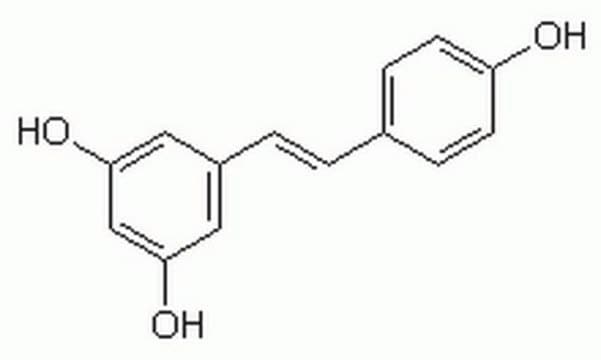34092
Resveratrol
analytical standard
Synonym(s):
3,4′,5-Trihydroxy-trans-stilbene, 5-[(1E)-2-(4-Hydroxyphenyl)ethenyl]-1,3-benzenediol
About This Item
Recommended Products
grade
analytical standard
Quality Level
shelf life
limited shelf life, expiry date on the label
technique(s)
HPLC: suitable
gas chromatography (GC): suitable
application(s)
cleaning products
cosmetics
food and beverages
personal care
format
neat
storage temp.
−20°C
SMILES string
Oc1ccc(cc1)\C=C\c2cc(O)cc(O)c2
InChI
1S/C14H12O3/c15-12-5-3-10(4-6-12)1-2-11-7-13(16)9-14(17)8-11/h1-9,15-17H/b2-1+
InChI key
LUKBXSAWLPMMSZ-OWOJBTEDSA-N
Looking for similar products? Visit Product Comparison Guide
General description
Application
Recommended products
signalword
Warning
hcodes
Hazard Classifications
Eye Irrit. 2
Storage Class
10 - Combustible liquids
wgk_germany
WGK 3
flash_point_f
>392.0 °F - closed cup - (External MSDS)
flash_point_c
> 200.0 °C - closed cup - (External MSDS)
ppe
dust mask type N95 (US), Eyeshields, Faceshields, Gloves
Choose from one of the most recent versions:
Already Own This Product?
Find documentation for the products that you have recently purchased in the Document Library.
Customers Also Viewed
Articles
Antioxidants protect biological systems from oxidative damage produced by oxygen-containing free radicals and from redoxactive transition metal ions such as iron, copper, and cadmium.
Our team of scientists has experience in all areas of research including Life Science, Material Science, Chemical Synthesis, Chromatography, Analytical and many others.
Contact Technical Service











